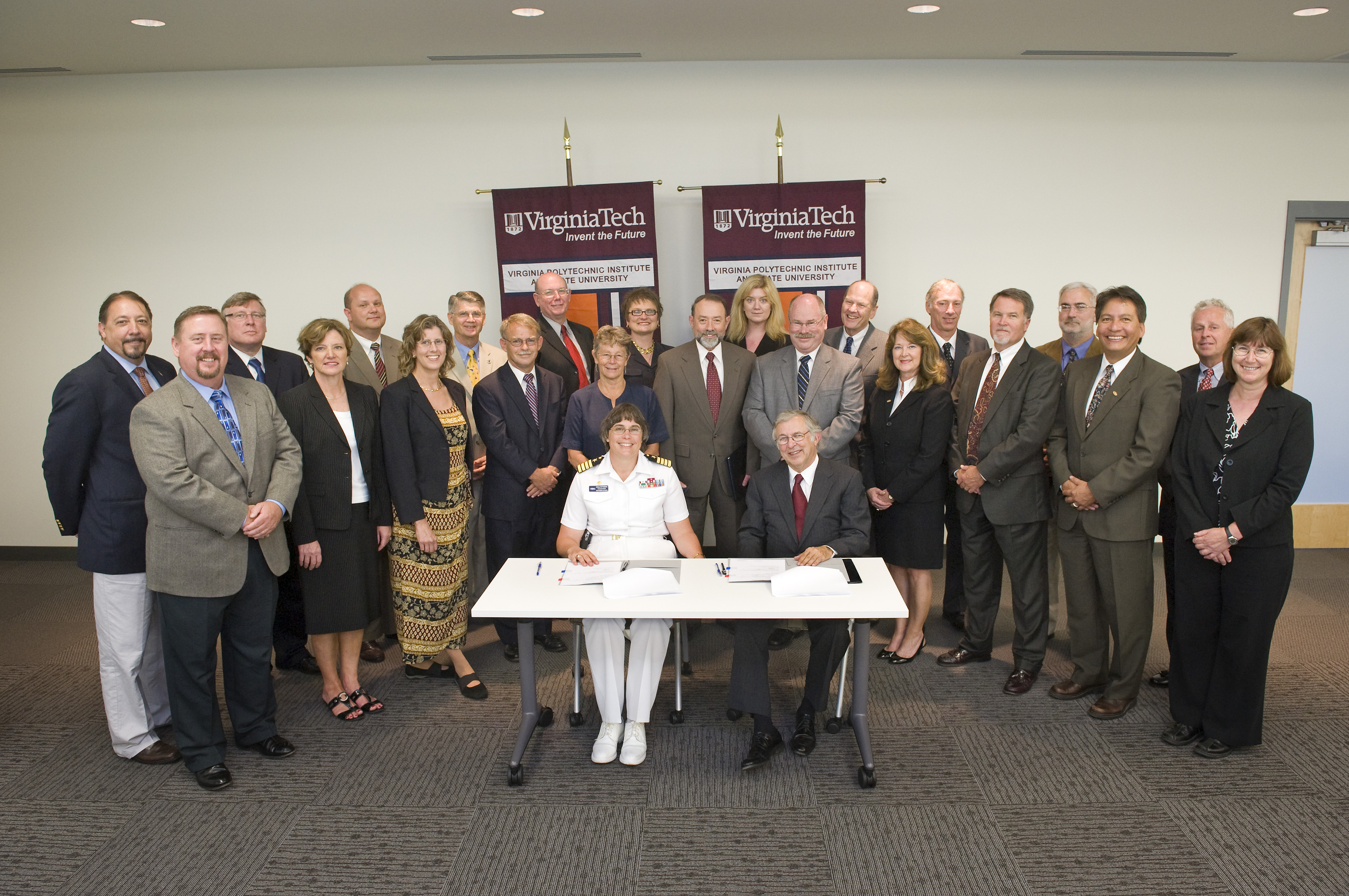Virginia Tech, Navy center sign cooperative research and development agreement

Almost a year of discussions has resulted in a five-year, $7.5 million indefinite delivery/indefinite quantity contract and a Cooperative Research and Development Agreement (CRADA) between Virginia Tech and the Naval Surface Warfare Center Dahlgren Division (NSWCDD).
Virginia Tech has carried out many research projects for the Navy warfare center during the past 25 years, primarily on shipboard systems and materials. As the projects neared completion, university officials approached the Navy warfare center with information about new capabilities.
In fact, collaborative research is already underway again as a result of a memorandum of understanding signed in November 2008. New research areas to date include pulsed and high power electromagnetic technology, ground unmanned support systems, railgun technology, and creation of a radio frequency (RF) propagation model. "In all, eight task orders and seven white papers are underway funded at $1.8 million, and educational partnerships will begin this fall," said Christopher Cornelius, director of the Center for Naval Systems at Virginia Tech.
Michael Wood, director of the NSWCDD Technical Partnering Office, said that NSWC Dahlgren has worked with Virginia Tech students and researchers for over 25 years. "We were invigorated to see Virginia Tech reaching out to say, 'Let's partner again.'"
Virginia Tech Vice President for Research Bob Walters responded, "Every way we can engage with you, we want to."
Virginia Tech President Charles W. Steger told the visitors from NSWCDD that the university has a diversity of programs that generate new knowledge and capacity and a prescriptive side to respond to problems. "We have 30,000 students and a wonderful faculty and staff committed to quality and success."
Capt. Sheila Patterson said that NSWC Dahlgren is a $1.2 billion business, which partners with industry and academia, including international. She told Virginia Tech researchers at the CRADA signing ceremony that a principal mission for NSWCDD is science and technology and research and development for military applications. "Ph.D. scientists work with the technical departments in order to integrate systems. We are focused on integration of sensors, software, weapons, and other platforms to extend the range of weapons systems," she said.
Patterson also emphasized the importance of education. "We incentivize our workforce to pursue advanced degrees. We have to keep the workforce current, agile, and able."
Cornelius said, "The partnership offers collaboration for innovative research, which brings teams together and results in new viewpoints; access to unique labs and facilities at each institution; joint publication of studies, evaluations, and lessons learned; and acceleration and expansion of promising technologies for national security." He said, "I consider working for national security very important."



.jpg.transform/m-medium/image.jpg)
